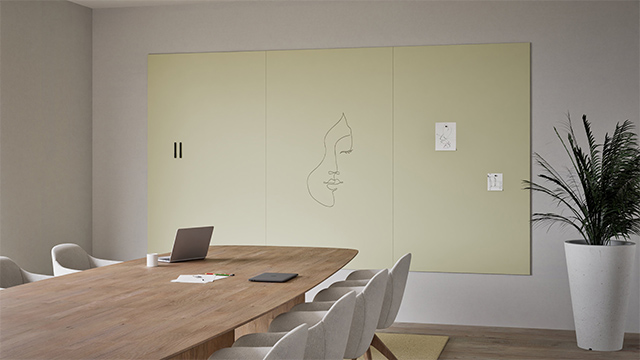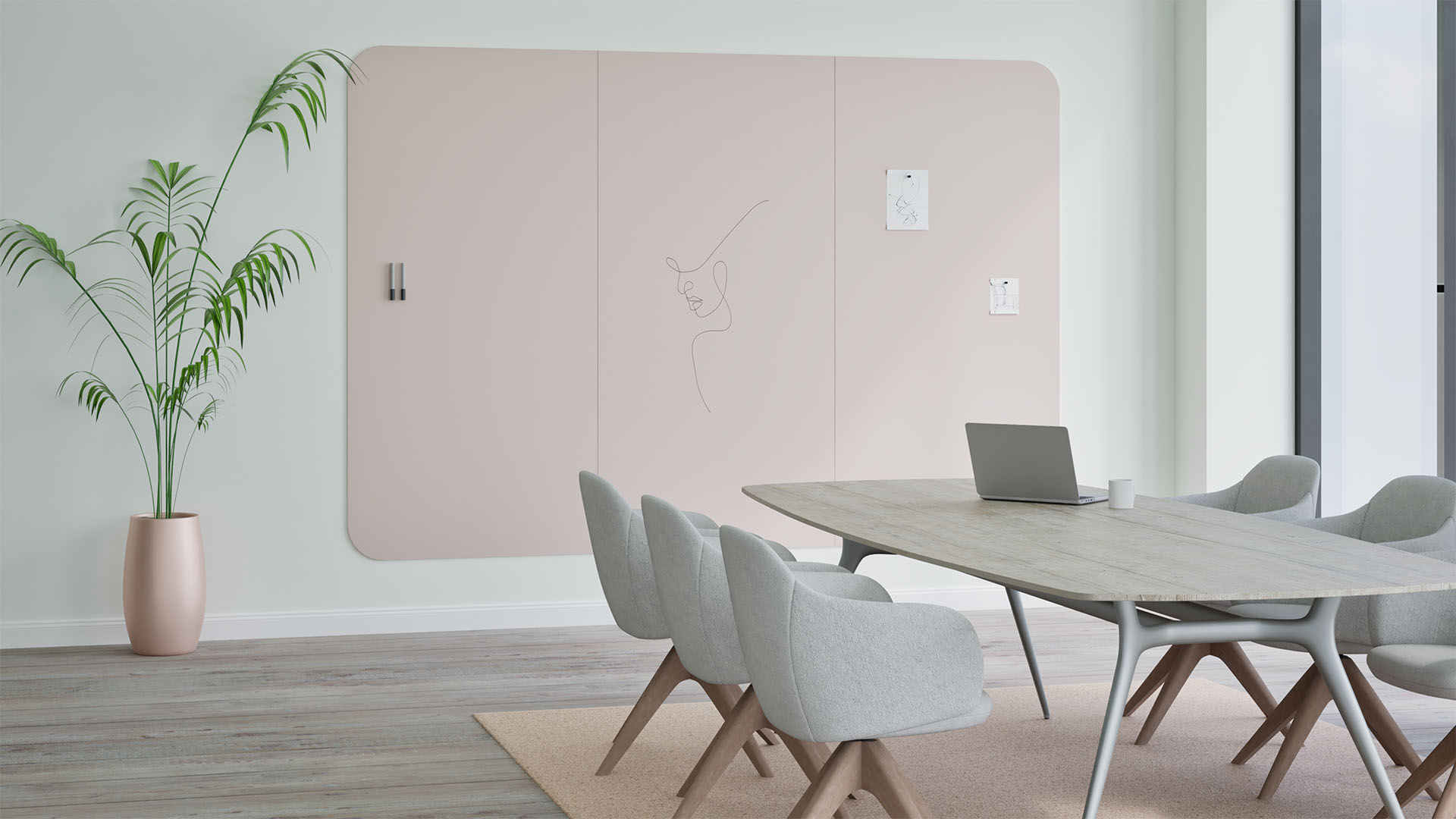In a sector where digital tooling is the standard and every workflow is optimized through cloud-based platforms, analog work may seem counterintuitive at first. But appearances can be deceiving. Especially within high-performance development environments, agile teams, and DevOps cultures, analog working methods on a whiteboard provides a unique and irreplaceable value.
Array
(
[1049] => WP_Post Object
(
[ID] => 1049
[post_author] => 1
[post_date] => 2025-08-20 07:43:47
[post_date_gmt] => 2019-08-05 13:54:24
[post_content] =>
[post_title] => Products
[post_excerpt] =>
[post_status] => publish
[comment_status] => closed
[ping_status] => closed
[post_password] =>
[post_name] => whiteboards-5
[to_ping] =>
[pinged] =>
[post_modified] => 2025-08-20 07:43:47
[post_modified_gmt] => 2025-08-20 07:43:47
[post_content_filtered] =>
[post_parent] => 0
[guid] => https://chameleonwriting.falkor.alcor.cloud/?p=1049
[menu_order] => 1
[post_type] => nav_menu_item
[post_mime_type] =>
[comment_count] => 0
[filter] => raw
[db_id] => 1049
[menu_item_parent] => 0
[object_id] => 1049
[object] => custom
[type] => custom
[type_label] => Custom Link
[title] => Products
[url] => #
[target] =>
[attr_title] =>
[description] =>
[classes] => Array
(
[0] =>
)
[xfn] =>
)
[12842] => WP_Post Object
(
[ID] => 12842
[post_author] => 82
[post_date] => 2025-08-20 07:43:47
[post_date_gmt] => 2023-08-31 08:07:16
[post_content] =>
[post_title] =>
[post_excerpt] =>
[post_status] => publish
[comment_status] => closed
[ping_status] => closed
[post_password] =>
[post_name] => 12842
[to_ping] =>
[pinged] =>
[post_modified] => 2025-08-20 07:43:47
[post_modified_gmt] => 2025-08-20 07:43:47
[post_content_filtered] =>
[post_parent] => 0
[guid] => https://chameleonwriting.falkor.alcor.cloud/?p=12842
[menu_order] => 43
[post_type] => nav_menu_item
[post_mime_type] =>
[comment_count] => 0
[filter] => raw
[db_id] => 12842
[menu_item_parent] => 0
[object_id] => 12839
[object] => page
[type] => post_type
[type_label] => Page
[url] => https://chameleonwriting.com/en/references-3/
[title] => References
[target] =>
[attr_title] =>
[description] =>
[classes] => Array
(
[0] =>
)
[xfn] =>
)
[11862] => WP_Post Object
(
[ID] => 11862
[post_author] => 82
[post_date] => 2025-08-20 07:43:47
[post_date_gmt] => 2023-08-21 13:36:51
[post_content] =>
[post_title] => pCon
[post_excerpt] =>
[post_status] => publish
[comment_status] => closed
[ping_status] => closed
[post_password] =>
[post_name] => pcon-data
[to_ping] =>
[pinged] =>
[post_modified] => 2025-08-20 07:43:47
[post_modified_gmt] => 2025-08-20 07:43:47
[post_content_filtered] =>
[post_parent] => 4705
[guid] => https://chameleonwriting.falkor.alcor.cloud/?p=11862
[menu_order] => 44
[post_type] => nav_menu_item
[post_mime_type] =>
[comment_count] => 0
[filter] => raw
[db_id] => 11862
[menu_item_parent] => 0
[object_id] => 4701
[object] => page
[type] => post_type
[type_label] => Page
[url] => https://chameleonwriting.com/en/information/interior-designers-and-architects/chameleon-now-available-in-pcon/
[title] => pCon
[target] =>
[attr_title] =>
[description] =>
[classes] => Array
(
[0] =>
)
[xfn] =>
)
[32752] => WP_Post Object
(
[ID] => 32752
[post_author] => 85
[post_date] => 2025-08-20 07:43:47
[post_date_gmt] => 2025-08-07 10:59:20
[post_content] =>
[post_title] => Order Samples
[post_excerpt] =>
[post_status] => publish
[comment_status] => closed
[ping_status] => closed
[post_password] =>
[post_name] => order-samples-2
[to_ping] =>
[pinged] =>
[post_modified] => 2025-08-20 07:43:47
[post_modified_gmt] => 2025-08-20 07:43:47
[post_content_filtered] =>
[post_parent] => 0
[guid] => https://chameleonwriting.com/?p=32752
[menu_order] => 45
[post_type] => nav_menu_item
[post_mime_type] =>
[comment_count] => 0
[filter] => raw
[db_id] => 32752
[menu_item_parent] => 0
[object_id] => 32718
[object] => page
[type] => post_type
[type_label] => Page
[url] => https://chameleonwriting.com/en/chameleon-samples/
[title] => Order Samples
[target] =>
[attr_title] =>
[description] =>
[classes] => Array
(
[0] =>
)
[xfn] =>
)
[26482] => WP_Post Object
(
[ID] => 26482
[post_author] => 85
[post_date] => 2025-08-20 07:43:47
[post_date_gmt] => 2025-01-17 11:08:57
[post_content] =>
[post_title] => Information
[post_excerpt] =>
[post_status] => publish
[comment_status] => closed
[ping_status] => closed
[post_password] =>
[post_name] => information-2
[to_ping] =>
[pinged] =>
[post_modified] => 2025-08-20 07:43:47
[post_modified_gmt] => 2025-08-20 07:43:47
[post_content_filtered] =>
[post_parent] => 0
[guid] => https://chameleonwriting.com/?p=26482
[menu_order] => 46
[post_type] => nav_menu_item
[post_mime_type] =>
[comment_count] => 0
[filter] => raw
[db_id] => 26482
[menu_item_parent] => 0
[object_id] => 26482
[object] => custom
[type] => custom
[type_label] => Custom Link
[title] => Information
[url] => #
[target] =>
[attr_title] =>
[description] =>
[classes] => Array
(
[0] =>
)
[xfn] =>
)
[19332] => WP_Post Object
(
[ID] => 19332
[post_author] => 3
[post_date] => 2025-08-20 07:43:47
[post_date_gmt] => 2024-05-14 11:58:44
[post_content] =>
[post_title] => Contact
[post_excerpt] =>
[post_status] => publish
[comment_status] => closed
[ping_status] => closed
[post_password] =>
[post_name] => contact-4
[to_ping] =>
[pinged] =>
[post_modified] => 2025-08-20 07:43:47
[post_modified_gmt] => 2025-08-20 07:43:47
[post_content_filtered] =>
[post_parent] => 0
[guid] => https://chameleonwriting.com/?p=19332
[menu_order] => 51
[post_type] => nav_menu_item
[post_mime_type] =>
[comment_count] => 0
[filter] => raw
[db_id] => 19332
[menu_item_parent] => 0
[object_id] => 19332
[object] => custom
[type] => custom
[type_label] => Custom Link
[title] => Contact
[url] => https://chameleonwriting.com/en/contact/
[target] =>
[attr_title] =>
[description] =>
[classes] => Array
(
[0] =>
)
[xfn] =>
)
[12326] => WP_Post Object
(
[ID] => 12326
[post_author] => 82
[post_date] => 2025-08-20 07:43:47
[post_date_gmt] => 2023-08-25 07:08:58
[post_content] =>
[post_title] => Languages
[post_excerpt] =>
[post_status] => publish
[comment_status] => closed
[ping_status] => closed
[post_password] =>
[post_name] => taalschakelaar-6
[to_ping] =>
[pinged] =>
[post_modified] => 2025-08-20 07:43:47
[post_modified_gmt] => 2025-08-20 07:43:47
[post_content_filtered] =>
[post_parent] => 0
[guid] => https://chameleonwriting.falkor.alcor.cloud/?p=12326
[menu_order] => 52
[post_type] => nav_menu_item
[post_mime_type] =>
[comment_count] => 0
[filter] => raw
[db_id] => 12326
[menu_item_parent] => 0
[object_id] => 12326
[object] => custom
[type] => custom
[type_label] => Language switcher
[title] => EN
[url] => #pll_switcher
[target] =>
[attr_title] =>
[description] =>
[classes] => Array
(
[0] => pll-parent-menu-item
)
[xfn] =>
)
)
1
5 reasons why analog work does make sense in a digital environment
1. Reducing cognitive load = increasing focus
Digital tools are powerful, but they can also lead to cognitive overload. Constant context switching between Jira, Slack, Miro, and Notion consumes mental energy. An analog workspace offers a kind of low-latency thinking: immediate access to information without logging in, scrolling, or navigating interfaces. The visual proximity of a whiteboard lowers the mental threshold to oversee, prioritize, and act.
2. Parallel processing of ideas
During brainstorms, sprint planning, or retrospectives, an analog setup enables genuine interaction. Physically clustering user stories or architectural sketches on a board facilitates parallel processing, allowing multiple team members to contribute at the same time, without the bottlenecks of a single shared digital interface. This stimulates ownership and increases delivery speed.
3. Persistent visibility = stronger alignment
An analog board in the room functions as a constant information radiator. Where digital dashboards are often buried in tabs or tools, physical presence ensures continuous visibility. Stakeholders, developers, and product owners can instantly see status, dependencies, and priorities. This strengthens cross-team alignment and reduces communication latency.


4. Physical collaboration boosts psychological safety
Agile isn’t just a process, it’s a culture. In an analog setting, sketching out ideas becomes easier and less perfectionistic. There’s no need for a pixel-perfect mockup, a quick wireframe on a whiteboard with a marker lowers the barrier to contribute. This fosters an open feedback culture and supports psychological safety within teams.
5. Fail fast, visualize faster
Architecture decisions, dependency mapping, and MVP scoping are ideal use cases for lo-fi visual thinking. A whiteboard session makes iteration faster and more tangible than any digital canvas can. For ICT teams striving to work lean, analog tools help expose flaws or scope creep sooner, and more clearly.
Our conclusion
Analog work is not a regression, but a strategic component within high-functioning ICT teams. It enables faster alignment, deeper focus, and stronger team dynamics, exactly the elements that support a healthy DevOps flow and sustainable productivity.


